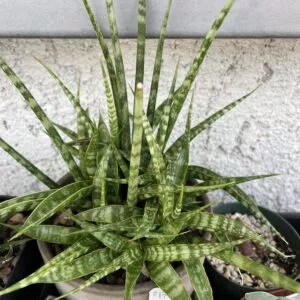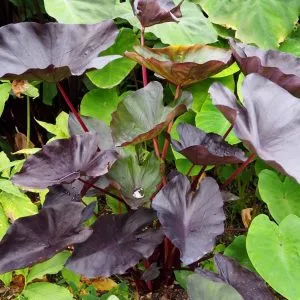No products in the cart.
Table of Contents
To become plant parents does not mean you need to have a green thumb. No, you can become plant owners for the first time. You can find a potted plant that is low maintenance to care for to add color to your living space and put a smile on your face.
How? Some helpful tips before buying houseplants will make choosing the right plant simpler.
First Things First Choosing Indoor Plants a Beginner’s Guide
When we think back to the pandemic times from 2019 to 2021, we all stared at black corners, and everyone became interior designers. How? By adding a gorgeous houseplant to that bare corner.
Still, now that the worst has passed, you have not become a new parent to a plant. So there is no need to wait for another major quarantine to happen. No, you can fill each home corner with new plants to become a resident plant mom or dad.
So, if you are concerned about killing your new plant baby, read the section before you head out to invest in smaller plants to choose the best one that works with your living needs.
The Preference for First-Time Plant Parents

When it comes to houseplant care and choosing your first new pot to plant, it is important to do your research. Choosing the right plants needs light, water, and a spot in your home. With this said, we all make common mistakes, and knowing the basic knowledge of how plants work help.
Once you understand that the best plants need light to photosynthesize and that they only take up so much water, it helps. So, if you have low light, you know you need not water much and need to pay more attention to the potting mix and how moist it is.
While you can have care instructions and choose a decorative pot with enough drainage holes to keep small plants, not every houseplant reacts the same. But you can find some small to larger plants to create an indoor jungle not only because they are pretty but easy to care for.
So, do not only choose plants because they look beautiful in images but also consider the plant’s specific needs. So do some research and take a deep breath, as you can find so much variance in plants that it is sure to fit in with your preference.
What are The Light Conditions in Your Home?
The first step for plant owners to understand is the light in the home. You cannot expect house plants like the bird of paradise to bloom if it does not have direct sunlight or too bright light as it scorches those beautiful leaves of the peace lily.
If you are uncertain about the light in the living space, it helps to figure out what direction your windows face. Also, check to see if anything is blocking the light from outside. Finally, it helps keep things simple to decide whether direct or indirect sunlight.
Then consider whether it is low, indirect, or direct light to choose the best plants for that spot. For example, when owning plants with limited sunlight, choose low-light plants compared to ones that need bright indirect light for plants to thrive.
Do You Have Kids or Pets in The Home?

Both children and pets are curious when it comes to most plants. The concern is that some small to large plants are toxic when digested. While you can invest in these plants, it helps to know if they are poisonous.
If you choose one, you always have the choice of placing them up high or in hanging baskets out of reach.
Will You Be a Bussy or Full-Time Plant Parent?
Yes, considering this as a first-time plant owner is essential. Who will care for your baby plants if you travel often and seldom at home? Or are you at home most of the time? Knowing this helps you to decide what type of plant to choose.
When you travel a lot, it helps to invest in low-maintenance indoor plants that need moderate watering to light.
Location ( Based on their region: USDA )
Another consideration is understanding the USDA hardiness zone chart selecting your plant species. The map is helpful for outdoor plants and what species will work better as indoor plants.
The rule of thumb is the lower the zone number, the lower temperature you have, as each one represents a temperature degree difference. So, for example, you may find a zone divided into a and b segments indicating a five-degree temperature difference.
What is The Temperature and Humidity In Your Home?
For first-time plant owners, the temperature to humidity is just as important. If you become a plant parent of tropical species, these plants thrive in warm temperatures, mostly with high nudity compared to a cactus. These features play a huge role when selecting plants for indoors.
But there is always a solution, like using a humidifier or pebble tray to add more moisture to the home.
Plant Buying Beginner’s Guide
Now that you know the basics, the next step is to find the right plant for your home.
Always read the plant labels or care instructions to know they will match your space.
Also, check the plant if you buy it from a garden center or online. Look to see if the plant is browning, has yellowing leaves, or wilting. It helps to look at the plant’s health. If the health is not right, instead, look at another plant.
Check the soil, as the pot you receive the plant can only stay in for a little while. We recommend repotting your plant into a container with a drainage hole and fresh soil when you see your plant root bound.
Another concern is pests, which helps keep your new plant in quarantine for a while to ensure it has no bugs. If it does have bugs, you can care for it using rubbing alcohol to remove them.
If you notice dead leaves, we recommend removing them when you receive your plant with a door delivery, as it will help with new growth.
These are some of the basics to becoming a parent of house plants. But what type of plants can you get as a new parent?
Best Low-Maintenance Houseplants For New Plant Parents
Here we have some of our favorite houseplants that are almost hard to kill, even for beginners.
Snake Plants

When you look at certain plants, cannot thrive in little sunlight. But you can find plants that prefer low light, like snake plants that flourish in darker areas. The plant can easily live in an indoor environment in a dark corner. It thrives in indoor temperatures and can go without some neglect.
Pothos

Nothing comes close to the Pothos or Devil’s Ivy for plant care with low maintenance. Another benefit of the plant is that it is an air purifier removing toxins from the air and a climber. It grows an aerial root system vertically using a coco coir pole.
How much light does it need?
Compared to the snake plant, Pothos needs more sunlight but not full sun resulting in leaf burn. Neither does it enjoy overwatering, leading to root rot from standing water. Hence, it helps to keep checking the soil and schedule watering when it is dry.
Succulent Plants

You can find a wide selection of succulents to keep as indoor plants. The most famous of the lot is the cactus which needs moderate watering.
You find them in small to large sizes. They prefer underwatering as standing in water can lead to root and crown rot.
Some even display beautiful blooms in the spring and summer months. Neither are they finicky when it comes to water, as you can water them well with tap water.
Spider Plants

These great houseplants easily adapt to a new environment and only need a good soak with dry spells between the watering schedule. It is not a time-consuming indoor plant but does need well-draining soil. Further, it can flourish in part sun to shade.
The spider plant has long rosettes that are thin with a solid green or with white variegation. They look great in hanging baskets.
Philodendrons

Another easy-going houseplant when it comes to plant care is the Philodendron species. The plant resides in a bright spot with enough sunshine for those gorgeous leaves to remain a vibrant color. It prefers the soil dry between watering, and always best to remove the excess water to prevent it from getting wet feet.
Final Thought
These are some of the best plants for a beginner plant parent that do not require consistency in plant care. So, why not choose one from the selection to become first-time plant owners today? You will not be disappointed with any of them.
Frequently Asked Questions
Always inspect the plant, container, and soil for disease or insects. We recommend checking both sides of the leaves for blackened areas, mushy areas, distortions, or webbing. Check the soil for holes, as these are signs of a pest infestation.
Buying plants online offers you convenience and is of higher quality than your in-store plants. But are they cheaper? The answer is it depends on the type of plant you buy. Yet, you can still find fair pricing, like free delivery to discounts at online plant stores.
It is always best to use a damp clean cloth to clean your plant leaves to remove dust from the foliage.
You can find many places selling low-maintenance houseplants, like your local garden center. Luckily you need not head out the door as Plantly has a trendy plant selection you can browse through and have delivered to your door.
Whether you want to buy, sell or simply reach out to other plant enthusiasts, Plantly is the right place to be!
In stock In stock In stock In stock
Free Shipping
$37.95 – $42.95
Sold By:
A&K Plants
Philodendron ‘Velvet’ – Rare Houseplant | Easy Care | Free Shipping | 4-inch pot
Only 22 available and it’s in 2 people’s basket Rated 4.95 out of 5 based on 66 customer ratings00
Sold By:
A&K Plants
$12.00
Sold By:
Beauties & Beasts
Cactus Succulent- Sansevieria fernwood -Succulet
Rated 4.83 out of 5 based on 24 customer ratings00
Sold By:
Beauties & Beasts
$26.95
Sold By:
Wonka Plants
Colocasia “Tea Party” Starter plant
Rated 4.94 out of 5 based on 108 customer ratings03
Sold By:
Wonka Plants
$10.49
Sold By:
Cacti and Exotica
Echinopsis subdenudata—Dominoes
Only 10 available and it’s in 2 people’s basket Rated 4.98 out of 5 based on 59 customer ratings00
Sold By:
Cacti and Exotica






